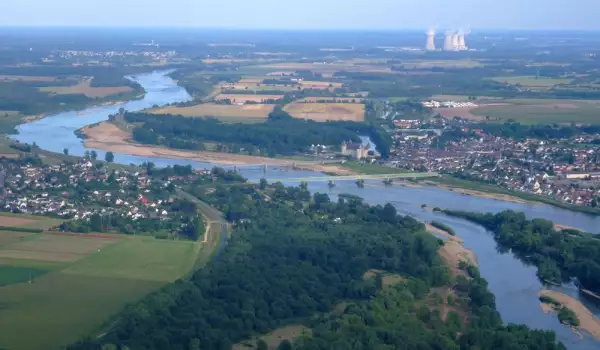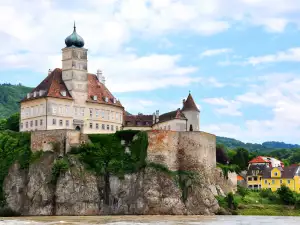Loire

Loire is the longest river in France. It has a length of 1012 km. It is the one hundred and seventieth longest river in the world. It rises in Cévennes and runs over a thousand kilometers across Nevers to Orléans. Then it passes through Toures and Nantes, until it reaches the Bay of Biscay, by St. Nazaire.
Loire has given its name to six departments – Loire, Haute-Loire, Loire-Atlantique, Indre-et-Loire, Maine-et-Loire and Saône-et-Loire. Riverbanks in the Loire valley are lined with magnificent castles and vineyards.
The name of the Loire comes from Latin Liger, which is a transcription of the Celtic name of the river.
Thousands of years ago, the Loire valley had already been inhabited by humans. Five thousand years BC, they began to sweep the woods along the river and turn them into fertile farmland. In 3500 BC, megaliths were built to commemorate the dead.
During the Iron Age Celts settled had in the river valley. Loire Valley quickly became an important trading center between the Celts and Greeks. In her past, it was one of the most important trade routes in France.
In '56 BC, the Celts’s peaceful life in the valley was broken to pieces by Julius Caesar, who conquered their territory. Then in 16 AD, the Loire valley became part of the Roman province Aquitania.
Christianity spread in the valley and then the vineyards along the river began to appear.

In the fifth century, the Franks and Alemans arrived from the east. In the ninth century, Vikings began to arrive, who used long vessels, which could pass through the Loire. They destroyed Toures in 853.
During the Hundred Years War - from 1337, to 1453, Loire became the border between England and France. Over a third of the inhabitants of the valley became victims of the plague during the epidemic in 1348.
Aquitania in 1360 became English after a British victory. In 1429, Joan of Arc’s people engaged in a war with England. The turning point of the war was the release of the siege of Orléans on the Loire.
During the reign of Francois I, the region around the Loire River was heavily influenced by Italian Renaissance. This is confirmed by some of the castles, which have remained ever since.
Loire Valley is known as the garden of France, due to its hundreds of castles and beautiful vineyards. The castles are with different types of architecture - from the Middle Ages to Renaissance.
In 1560 several Protestant Catholics drowned in the River Loire. From 1562 to 1598 Orléans served as the center of the Huguenots, but in 1568 the Protestants destroyed the Orléans cathedral. In 1572 occurred the famous massacre of St. Bartholomew's day. Three thousand Huguenots were killed in Paris, and then hundreds of them were drowned in the Loire, by Protestants.
Over the centuries, sailing on the river Loire was constantly developed and bridges were built. Sailing, however, was often hindered by floods and droughts.
In 1707 the river rose and drowned over fifty thousand people within two hours. The river rose more than three meters. In the early nineteenth century, steam boats began to ply the river. They carried passengers from Nantes to Orléans.
Loire Valley is known as the Valley of the Kings, as for several centuries, the monarchs of France ruled in the valley of the river, until the French Revolution.















